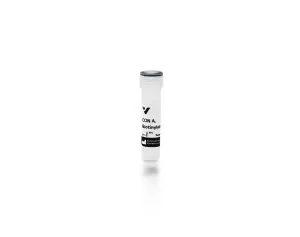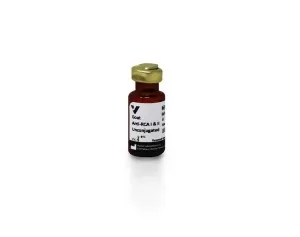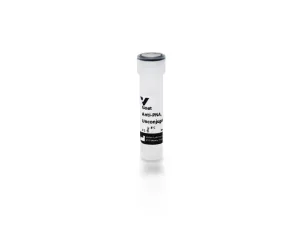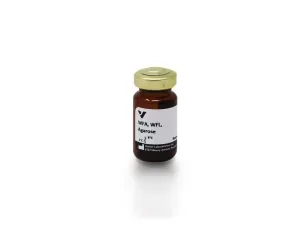Vector Laboratories is closed for the President’s Day on Monday, February 19th. We will be back in the office on Tuesday, February 20th.
We will respond to emails upon our return. Have a wonderful day.
Menu
Vector Laboratories is closed for the President’s Day on Monday, February 19th. We will be back in the office on Tuesday, February 20th.
We will respond to emails upon our return. Have a wonderful day.
Phaseolus vulgaris agglutinin is the name ascribed to a family of lectins, each of which consists of four subunits. There are two different types of subunits. One appears to be involved primarily in red cell agglutination and has been designated the “E” subunit (for erythroagglutinin). The other type is involved in lymphocyte agglutination and mitogenic activity and has been termed the “L” subunit (for leucoagglutinin). These subunits combine to produce five isolectins. PHA-E possesses strong hemagglutinating activity but is a poor mitogen.
Fluorescein labeled PHA-E has an appropriate number of fluorochromes bound to provide the optimum staining characteristics for this lectin. This conjugate is supplied essentially free of unconjugated fluorochromes. The excitation maximum is at 495 nm and the emission maximum is at 515 nm.
| Unit Size | 2 mg |
|---|---|
| Applications | Immunofluorescence, Glycobiology |
| Recommended Usage | The recommended concentration range for use is 5-20 µg/ml. |
| Recommended Storage | 2-8°C |
| Maximum Excitation | 495-500 nm |
| Maximum Emission | 514-521 nm |
| Solution | 10 mM HEPES, 0.15 M NaCl, pH 7.5, 0.08% sodium azide, 0.1 mM CaCl2, 5mg/ml Beta-Cyclodextrin |
| Concentration | 2 mg active conjugate/ml |
| Conjugate | Fluorescein |
| Color of Fluorescence | Green |
| Sugar Specificity | Galactose, Complex Structures |
Phaseolus vulgaris agglutinin is the name ascribed to a family of lectins, each of which consists of four subunits. There are two different types of subunits. One appears to be involved primarily in red cell agglutination and has been designated the E subunit (for erythroagglutinin). The other type is involved in lymphocyte agglutination and mitogenic activity and has been termed the L subunit (for leucoagglutinin). These subunits combine to produce five isolectins.
One of these isolectins has four E subunits and is designated PHA-E. PHA-E possesses strong hemagglutinating activity but is a poor mitogen. PHA-L, with four L type subunits, does not agglutinate red cells but is a potent mitogen. The other three isolectins, designated E3L1, E2L2, and E1L3, have erythroagglutinating and mitogenic activities proportional to the number of respective E or L subunits. We have termed the mixture of the five isolectins PHA (E+L).
PHA-L has been found to be an excellent, specific marker for use in anterograde neuronal tracing.
Fluorescein labeled PHA-E has an appropriate number of fluorochromes bound to provide the optimum staining characteristics for this lectin. This conjugate is supplied essentially free of unconjugated fluorochromes. The excitation maximum is at 495 nm and the emission maximum is at 515 nm.
Accompanying each fluorescent lectin is an analysis data sheet summarizing the results of our quality control tests and providing pertinent information on the product. All of these reagents are supplied as solutions preserved with sodium azide.
Elution: 100 mM acetic acid
Applicable patents and legal notices are available at legal notices.




Stay in the Loop. Join Our Online Community
Together we breakthroughTM

©Vector Laboratories, Inc. 2024 All Rights Reserved.
How do I Request a Quote?
To request a quote for products: